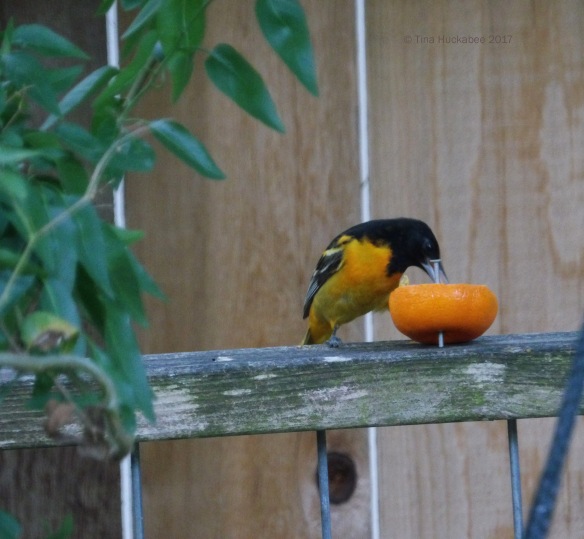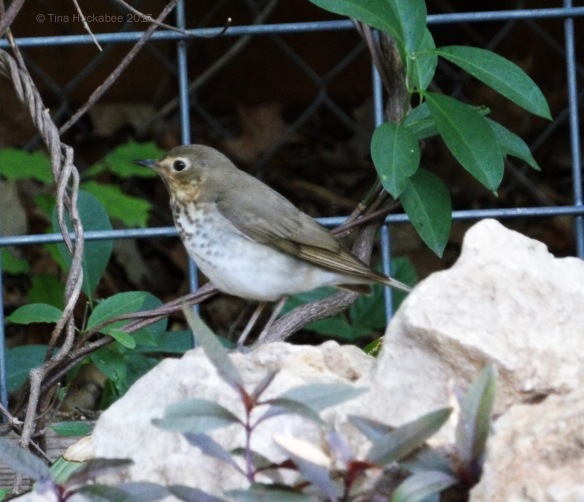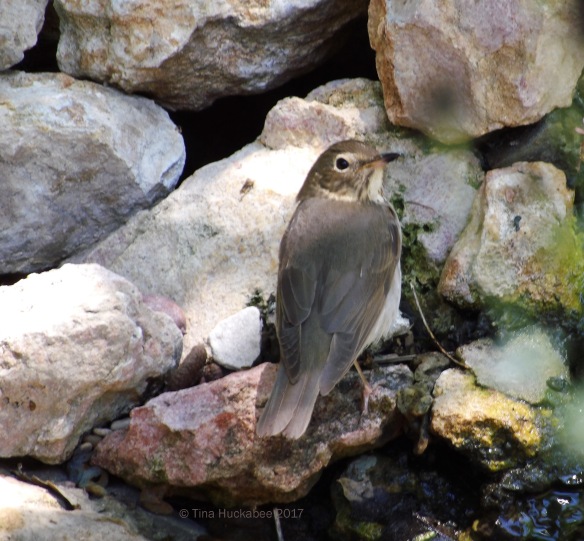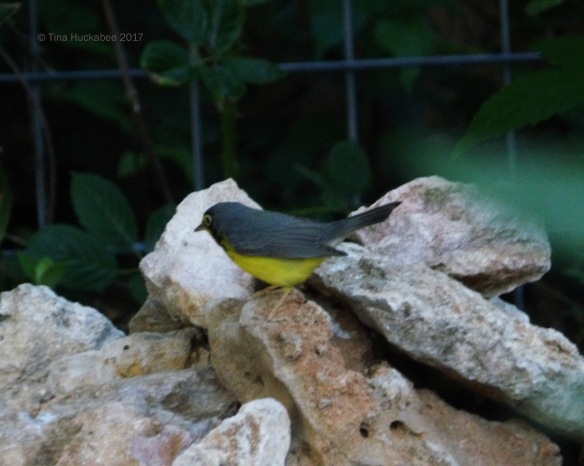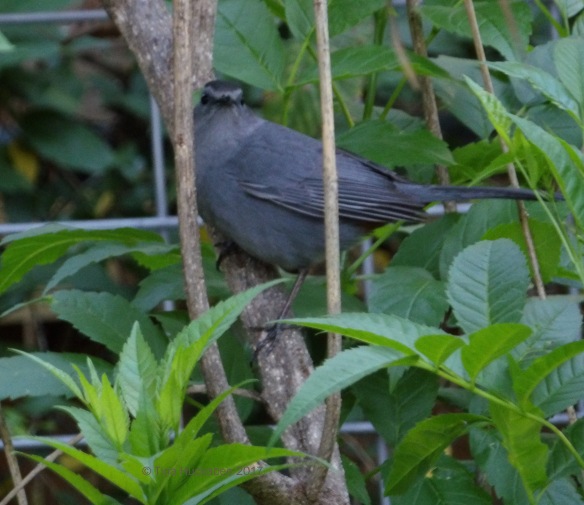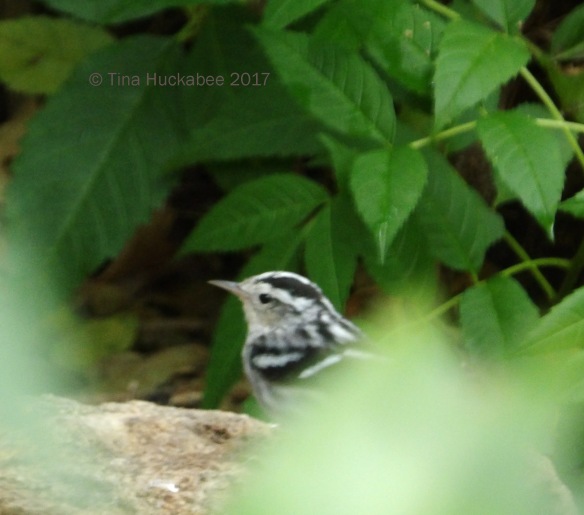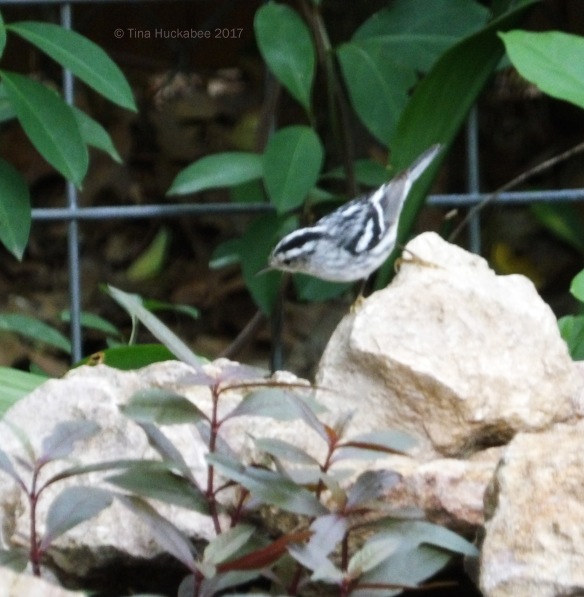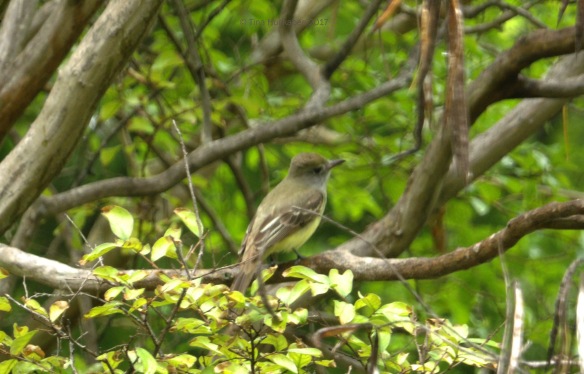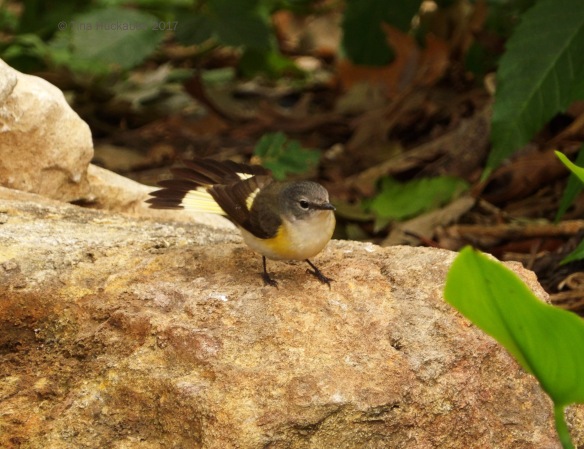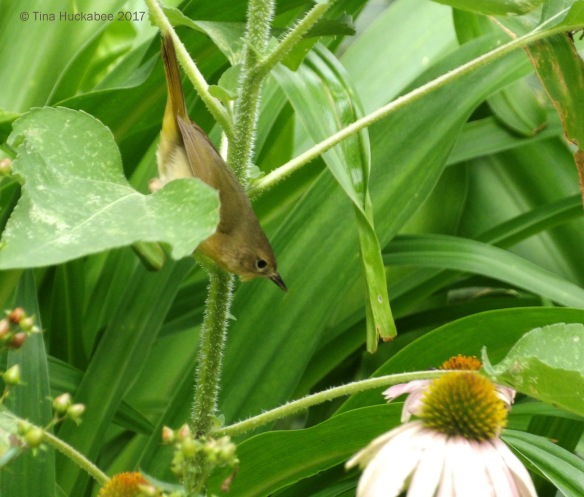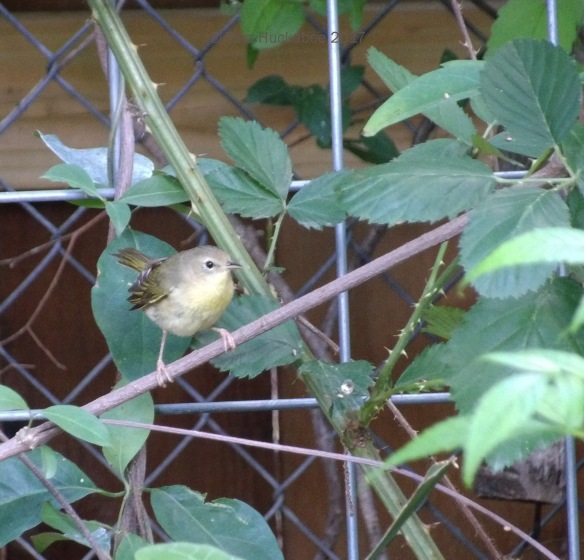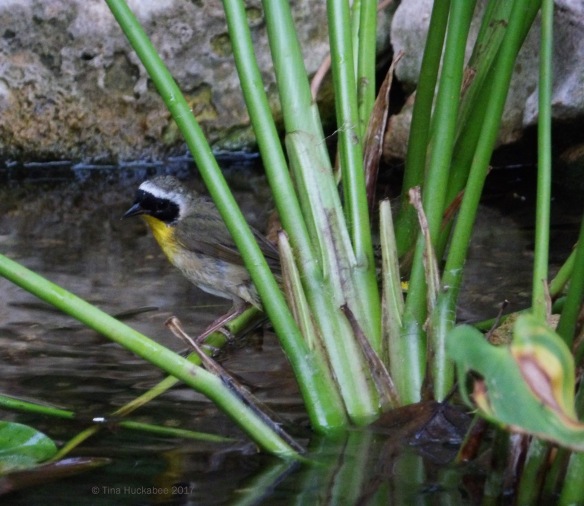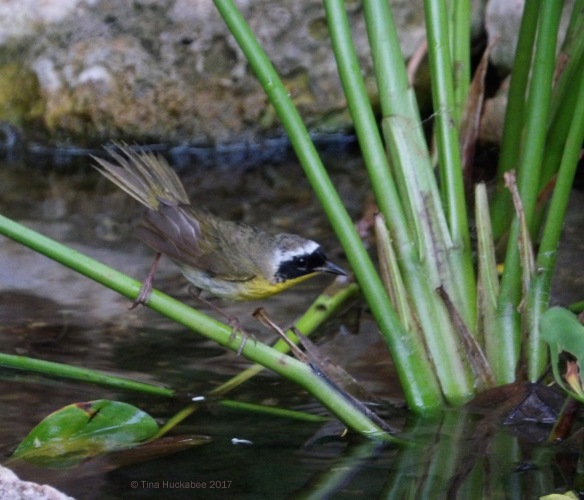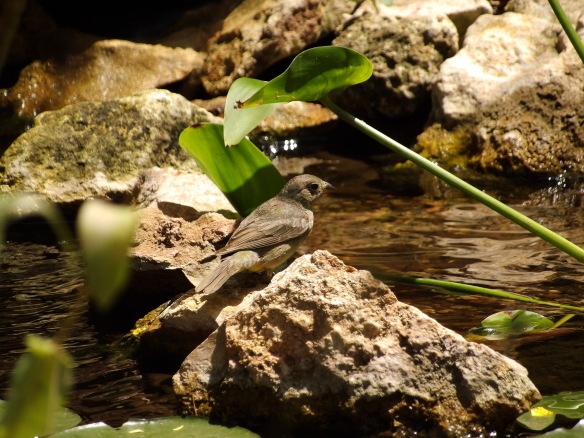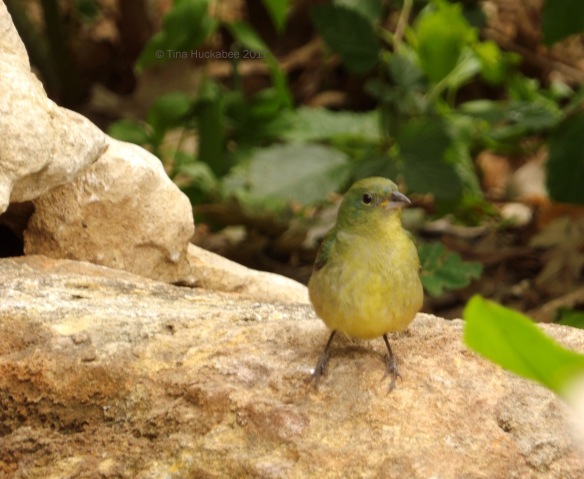The antics of North American neotropical birds (as they migrate from Central and South America to various parts of North America), continued in my garden during May and nearly into June. Bird migration is the remarkable natural phenomenon transforming the skies into invisible (to us) highways for those seeking longer days in which to raise young, and to locate and dine on new and different food sources from what wintering grounds provide. Today is the first Wednesday of June, so let’s revisit the wild happenings in our gardens from this past month. In my case, it’s all about the birds.
I’ve been privileged to host a variety of migratory birds as they stop to rest, bathe, and eat in my back garden. This spring, plenty of species that I’d seen before popped in, some lingering for days and others, for oh-so-brief stints. Yellow Warblers, Summer Tanagers, Red-winged Blackbirds, and more, comprise the regular sightings that I look forward to during spring migration. I appreciate these revisiting migrants (and their relatives), but this spring, the number and assortment of birds eclipsed any spring or autumn migratory period I’ve yet witnessed in my own garden space.
April’s Wildlife Wednesday saw the visitation of a lone female Baltimore Oriole, Icterus galbula, but during May, a small band of two males and another female stopped for a couple of days to nosh on delicious tangerine slices that I had placed on several fences in the hopes that these colorful birds would take a load off and pay a call–and it worked!
This male made short shrift of the juicy treat one evening.
Baltimore Orioles love ripe fruit of all sorts. During migration, orange or tangerine slices placed in gardens provide a high-calorie snack for the bird and an opportunity to please the bird watchers.
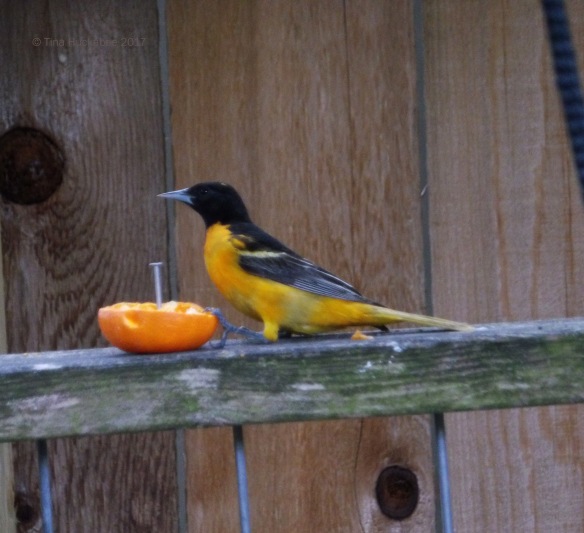
I hastily nailed, and then impaled, tangerine slices when I read that Baltimore Orioles were winging their way through Central Texas.
I think that before next autumn’s migration, I’m going to rig some sticks for the birds’ perching pleasure. This guy looks uncomfortable squatting on top of the flat surface while he slurps the sweet stuff.
I can report that the tangerines were fabulous!
During several mornings I spotted one, or more, Swainson’s Thrush birds, Catharus ustulatus.
These pretty birds hung around the pond, bathing or fluffing from bathing, but each individual also traipsed through the garden, presumably picking up yummy bugs for post-bath snacks. They have a funny way of running, reminiscent of how some water birds walk.
Swainson’s Thrushes enjoy a wide migration pattern, utilizing the entire width of the U.S. for migration and then breeding throughout a broad swath of Canada.
Another bird that I’ve never seen before this spring, and who made several appearances, were Canada Warblers, Cardellina canadensis. These beautiful, tiny birds were tough to photograph. They flit constantly and would not pose!
Despite this study in blur, his beauty is obvious, with coordinated, yet contrasting gray and yellow coloring, adorned by a black necklace.
These birds are shy and constantly on the go. They’re named for our fabulous northern neighbor, but are the last to migrate from South America and the first to leave Canada for their tropical winter home. They like it hot, I guess.
I think this is a female Canada warbler.
This was the best photo I managed. Her markings don’t quite fit the color patterns of other species with the gray and yellow scheme, but she also doesn’t show the faded black necklace that female and juveniles demonstrate. That could be my limited abilities to capture and not her lack of identity markers.
A gorgeous gray bird is this Gray Catbird, Dumetella carolinensis, who displays a you caught me! goofy look on his face.
Ah, this shot is better–you can see just how handsome this relative of the mockingbird is.
I’ve enjoyed previous visits from these birds, though usually they spend time in the blackberry vine, enjoying juicy fruits. This year my crop was a bust, but the Catbird visited nonetheless.
Black-and-white Warblers, Mniotilta varia, made appearances throughout April and May, but these are the best photos shots they allowed me:
I think the Black-and-white Warbler is a most elegant bird in both color and form.
Opposite from the Canada Warbler, the Black-and-whites are some of the first of the migrants to leave their tropical wintering homes and travel northward for breeding.
A Wilson Warbler, Cardellina pusilla,
…and his mate,
…spent a couple of days with me. They liked the pond–and the bugs! Both male and female worked up, down, and around various perennial plants, grabbing insects and hiding from the camera.
A Least Flycatcher, Empidonax minimus, stopped briefly,
…and charmed.
A Great Crested Flycatcher, Myiarchus crinitus, also showed up–and departed before the camera clicked.
Last spring (2016) several male and female American Redstart Warblers, Setophaga ruticilla, favored my garden and introduced themselves to me. This spring, only ladies visited.
This species hops and dances, flashing decorative, butter-yellow patterned tails.
A single male Chestnut-sided Warbler, Setophaga pensylvanica, briefly brightened the garden.
This multicolored cutey was a fleeting guest–I hope his kind returns one day.
The last warblers who vacated my garden was a pair of Common Yellowthroat Warblers, Geothlypis trichas. Cornell Lab of Ornithology (see previous link) describes their insect-hunting vocalizations as “witchety-witchety-witchety” and that’s exactly how I found them as the female worked the garden for some protein, witchety-whichetying all the while.
Here, she contemplates a dip in the pond.
The male, jaunty mask in place, enjoyed the pond, but I’m sure snatched his share of insects, too.
It’s been just over a week since I last spied these two; I hope they’re flying north to do their duty and raise a family. Moreover, I hope that they–with their offspring– pop back for a visit in September or October.
No male Painted Bunting, Passerina ciris, ever landed with his signature splash of color, but several females enjoyed my pond.
They’re always welcome in my garden–as are most wild critters. Come back soon, feathered friends!
Migrating or otherwise, did wildlife visit your garden this past month? Please post for June Wildlife Wednesday. Share photos and stories of your garden wildlife to promote and appreciate your region’s natural habitat and diversity. When you comment on my post, please remember to leave a link to your Wildlife Wednesday post so readers can enjoy a variety of garden wildlife observations.
Happy wildlife gardening!

